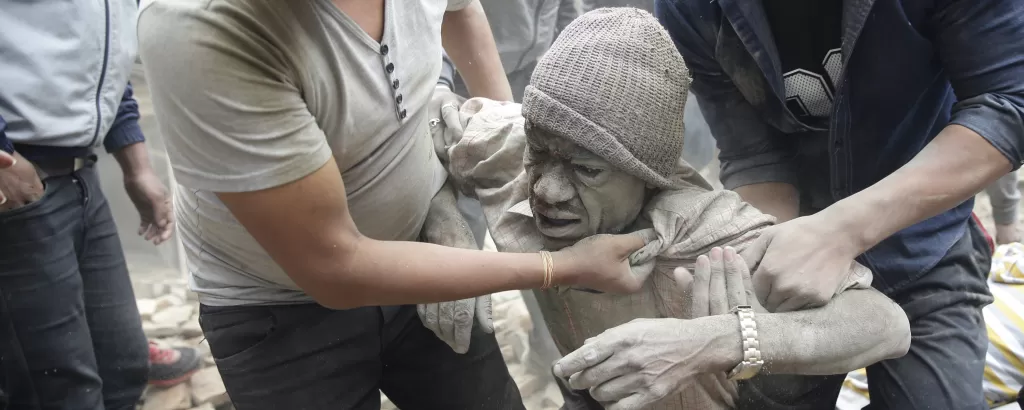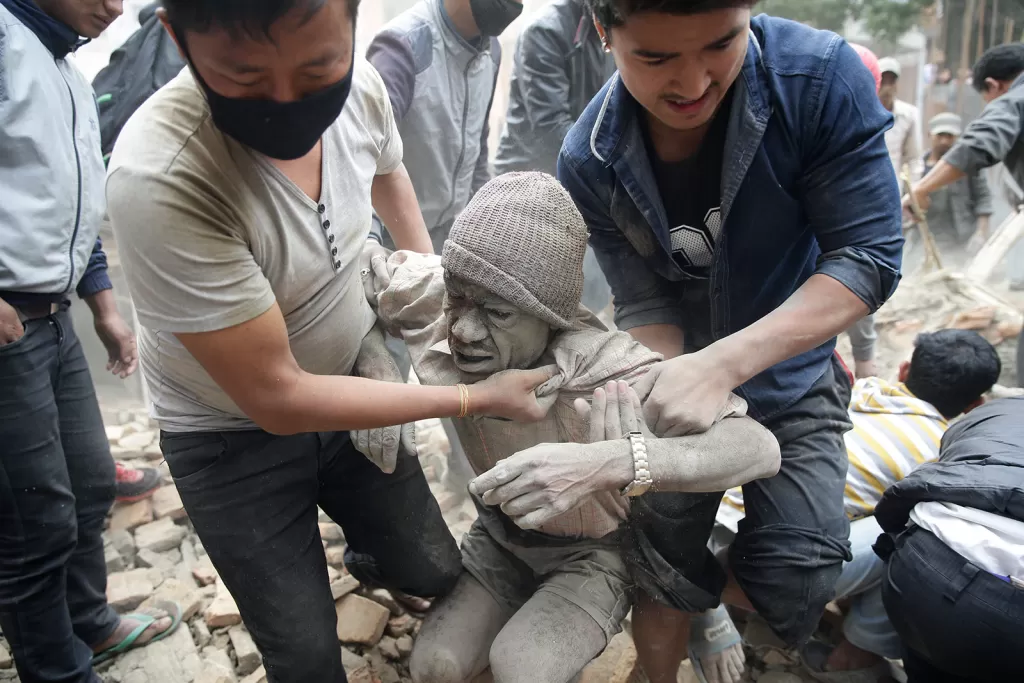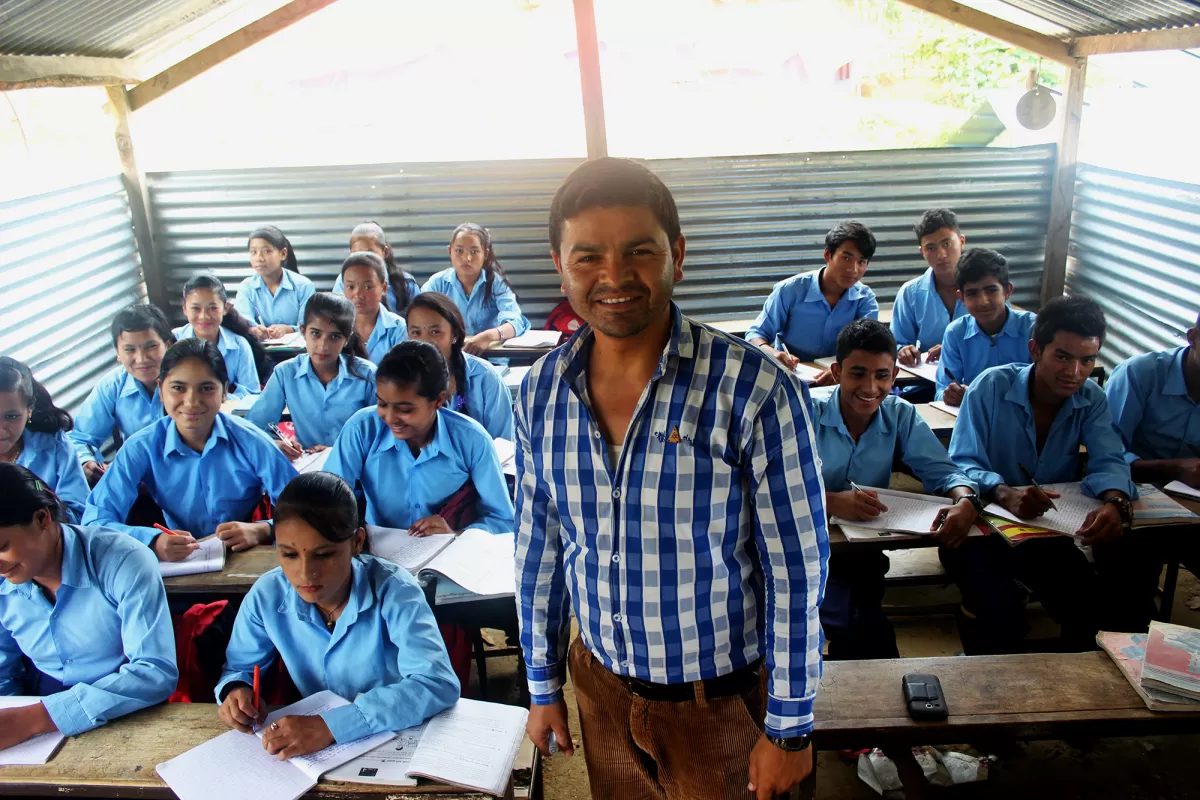Reports
Read more about how funds were spent and how the response to this disaster was evaluated.

A man is pulled from the rubble after the Nepal earthquake in April 2015. Image: EPA/Narendra Shrestha

raised including £5 million matched by the UK Government

emergency shelters were distributed

people gained access to safe drinking water

people received medical care
A temporary learning centre in Nepal set up by CAFOD. Image: Bikash Khadge/Caritas Switzerland/CAFOD
“When the children came back, they were traumatised and afraid,” explained the headmaster of a school in Sindhupalchok, Nepal. “We suspended classes for five days and ran a special programme with singing and dancing. This helped to calm the children. It helped a lot that students learned in class how to behave in case of an emergency and how to protect themselves from natural disasters.”
Temporary classrooms helped children continue with their education and regain some form of normal life after the trauma of the disaster.
Thanks to generous donations to the DEC’s Nepal Earthquake Appeal 200 temporary classrooms like this one were built.
Read more about how funds were spent and how the response to this disaster was evaluated.

